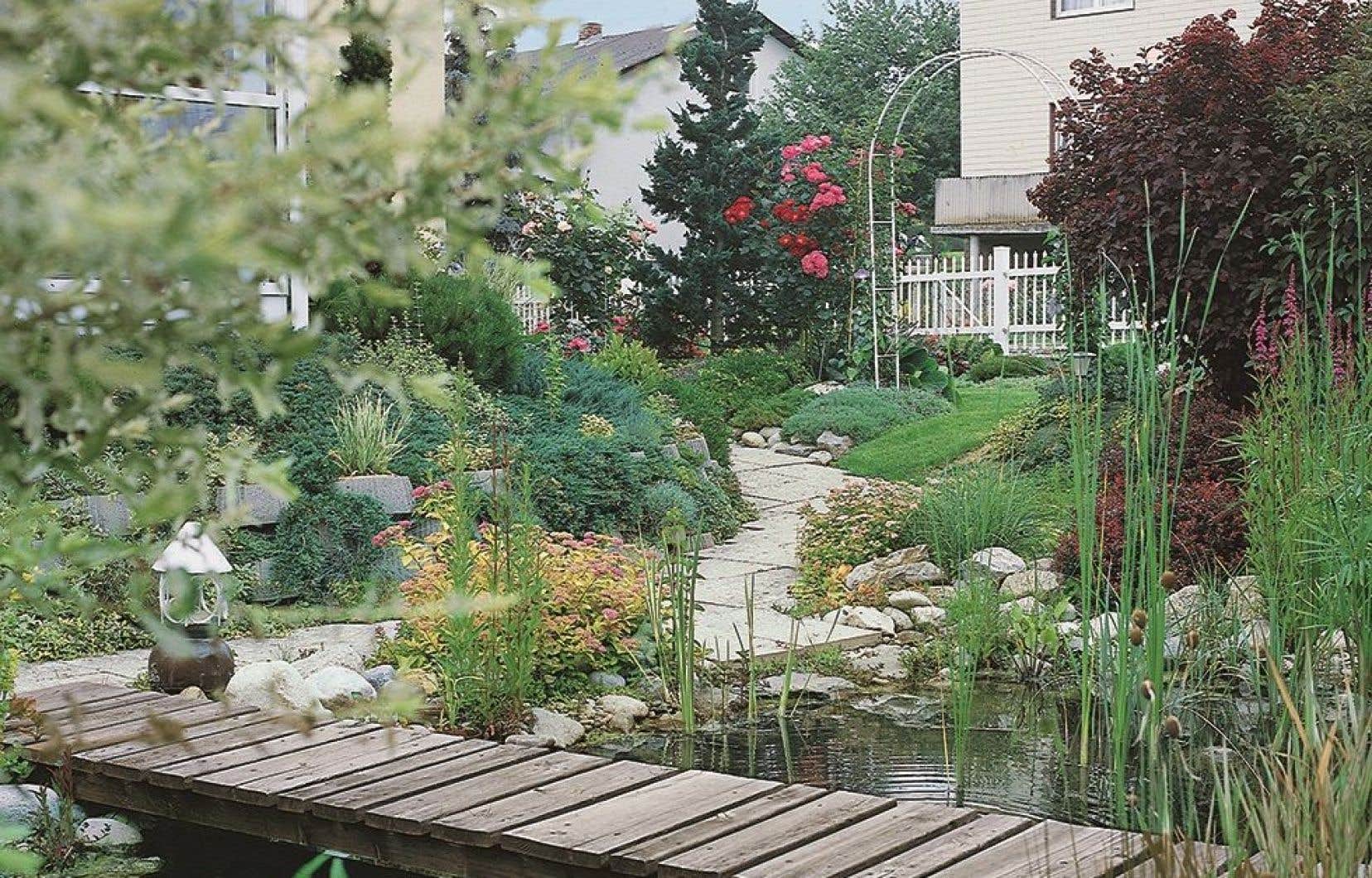This text is part of the special Pleasures notebook
Are you planning to install a brand new outdoor space or refresh an existing one? Have you thought about opting for a sustainable concept focused on simplicity and the valorization of materials and plants? This proven practice aims to create landscaping that will meet both your current and future needs, but also stand the test of time. All from a more environmentally friendly perspective. A short guide for your next green project.
In order to invest in the environmental cause, avoid waste and unnecessary expenses and choose elements that will leave their mark for a long time, here are some simple and practical tools. They will guide you in planning and carrying out your sustainable development project.
Green your environment
In sustainable landscaping, plants are in the spotlight. Whether they are ornamental or edible, they will always find the place that suits them. When planning your garden, pay particular attention to the choice of species and prioritize those that are resistant to the climate of your region. To make a winning selection, keep in mind the motto of “the right plant in the right place”. And remember that we don’t change the soil for a plant, but rather we must opt for those adapted to the type of soil!
Promote biodiversity by creating living, lush food zones. Incorporate edible plants such as small fruits, vegetables and fruit trees here and there in your project. Beautiful gourmet plants deserve to rub shoulders with shrubs, perennials and annuals. Also consider inviting pollinators into your garden by adding plants that contain an adequate source of nectar and pollen.
Opt for reuse
Giving a second existence to plants and materials that we already have is an integral part of sustainable practice in landscaping. Many slightly outdated objects come back to life through contact with new, more current ones. With a little imagination, you will be able to create a unique eco-friendly concept that you can personalize. A simple lick of paint can often dust off and refresh furniture or a shed. Consider combining old paving stones with slabs with more modern lines: you will be surprised at the result!
Also opt for the enhancement of existing plants by changing their location if necessary. Before getting rid of certain furniture, paving stones, plants or other items, take the time to think and ask yourself the important question: “Can I reuse it?” » As the answer is often yes when you show ingenuity and creativity, you will save a lot of money and at the same time add a touch of uniqueness to your concept.
Local purchasing and sustainable materials
When choosing your materials, your planting soil, your plants and any other element beneficial to the realization of your sustainable development, try to favor horticultural companies located nearby. This will allow you to reduce your environmental footprint, in addition to supporting the regional economy. The more you encourage local purchasing, the more the variety and availability of certain products will be improved.
In recent years, many ecological inert materials have appeared on the market to meet increasing demand. The use of recycled asphalt is also particularly trendy. This is a great way to reuse a material previously destined to landfill.
Several specialized companies have their own range of permeable pavers. By opting for this type of covering, you significantly reduce runoff and water loss while ensuring good distribution of rain and watering water to the planting areas. And this makes watering management much easier.
Good water management
From the earliest stages of planning your sustainable landscaping, pay special attention to water management. This resource must be preserved, regardless of the size and functions of your project. Consider limiting water loss in nature by restricting inert areas and maximizing the use of plants. This practice considerably reduces the creation of heat islands and prevents rainwater and water runoff.
In short, when developing a sustainable development, several decisions can be made taking into account the future. Ask retailers for durable eco-friendly materials, choose plants suited to your environment, attach great importance to water management and seek advice from garden designers. They will be able to give you excellent personalized recommendations!
This content was produced by the Special Publications team at Duty, relating to marketing. The writing of the Duty did not take part.
